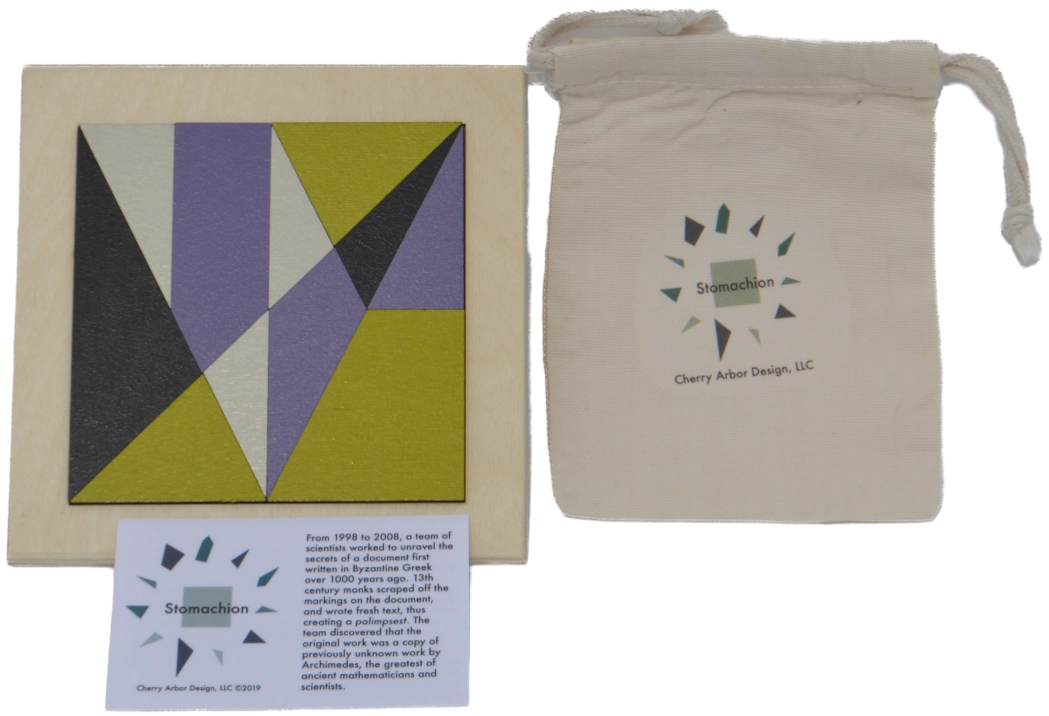Archimedes' puzzling dissection
In 1906, Danish historian Johan Heiberg was in Constantinople (today called Istanbul), studying an ancient document, written on parchment about 1000 years earlier. Over the centuries, monks scraped off the markings on the document, and wrote fresh text, thus creating a palimpsest.
Using only his naked eye, Heiberg determined that the original document was transcriptions of work by Archimedes, the greatest of ancient mathematicians and scientists. This made it only the third document with the work of Archimedes. Unfortunately, the document was then lost for ninety years.
When the document was redisovered, it was badly damaged. It sold at auction in 1998 for USD 2 million to an anonymous bidder, who turned the palimpsest over to the Walters Art Museum in Baltimore. Researchers at the museum employed modern X-ray techniques, computers, and intensive labor to piece it together. Check out this TED talk by the lead researcher, William Noel that describes how they restored the document and uncovered its secrets.
The Archimedes Palimpsest contained what is believed to be the first dissection puzzle. The Stomachion is a dissection of a square, resembling the tangram, but pre-dating the tangram by over 2000 years. Archimedes used 14 pieces, and some believe he was using the various arrangements that make a square to study combinatorics . Mathematicians Fan Chung and Ron Graham noted that 3 pairs of his pieces appear next to each other in all the square dissections. They suggested these be merged into a single piece, leaving 11 pieces, which they called the Stomach. We use 11 pieces as well.
There are multiple solutions with the eleven pieces. If we consider two solutions to be the same if we can get from one to the other by rotating the solution, or flipping it over, then there are 268 distinct solutions. Amazingly, starting from one solution, it is possible to step through 266 of the solutions by flipping or rotating a subset of the pieces.
